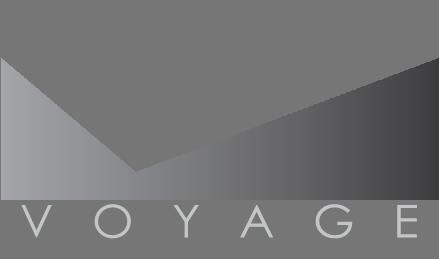Understanding Working Capital Financing Options For Franchises
Published on May 09, 2014Share Tweet Share
One of the oldest adages regarding starting and running a franchise is the answer to a common question; “What are the three most important aspects of a successful business?” and that answer is – “location, location, location.”
Which is great when you are just starting out and want to ensure that your business – your franchise – is located where the largest amount of your potential customers are (or, where they are most likely to find your business).
However, after finding the perfect location, launching your business and drawing all those potential consumers to your company – then what? How do you ensure that your business can service them all – can keep them happy and satisfied with your products or services?
Launching a business in the perfect location is a great first start – but, it is only the start. After your business is up and running, that is when the hard work really begins.
A retail franchise has to not only ensure that it has the inventory on hand to meet customers needs but it also has to continuously reinvent its inventory mix to meet those same customer’s expectation – bringing them back over and over again.
A service franchise business not only has to offer services that customers are willing to pay for (not just do themselves) but has to have the supplies and labor on hand to meet that demand and be flexible enough to service each customer’s individual needs across any level of demand.
And, a retail manufacturer has to ensure a ready and constant supply of raw materials to meet the demand for its products – regardless if that demand is up or down.
In essence, this means that the franchise has to ensure that its operations are flexible enough to overcome and eventually satisfy any and all customer needs.
How this is done, however, is by asking another question; “What are the three most important aspects of running a successful business?” and the answer is – “working capital, working capital, working capital.”
What Is Working Capital?
Working capital is essentially the life blood of a business – any business including franchises. If you compare your business to a vehicle (car, truck, motorcycle, big rig, etc), it is one thing to buy or own an automobile but it is the another to make that vehicle go down the road – getting you from point “A” to point “B”. To do this, you need a form of fuel – gas, diesel, electricity, bio-fuels, etc. Without that fuel, your vehicle will just sit around collecting dust.
In business, in order to make your company operate efficiently, you also have to add fuel to it – in the form of working capital – to get it from point “A” to point “B” or from start up to growth or growth to expansion or expansion to success.
Working capital can come in many forms from acquiring (financing or obtaining) inventory or raw materials to obtaining or having the cash on hand to pay needed labor, utilities and even rent.
Image a franchise (let’s call it “Any Time Tools and Machines”) lands a new, big customer that wants to buy $1 million dollars worth of the services it offers (providing tools and machines for huge construction projects) – but it doesn’t have enough of those tools and machines on hand for this job and cannot afford to get more right now to complete that job – which would take some $100,000 in additional rented or leases equipment. The franchise cannot consciously agree to that job and thus that customer takes that $1 million elsewhere.
Or, a residential blinds installation franchise gets a contract to install blinds and shades in a newly constructed apartment complex that needs to be completed in the next 30 days but will not get paid for the job for another 60 days when the apartment complex does its final closing. However, the franchise has to turn down this $250,000 job because it does not have or cannot afford the labor needed to complete the installation in the next 30 days (because that new labor will need – by law – to be paid before the 60 day apartment closing and subsequent payment for the franchise’s services).
Since the beginning of time, businesses have faced working capital short-falls that have essentially destroyed their companies. These businesses have done everything correctly up to that fatal point. They have driven customers to their companies and provided the products or services those consumers wanted. Yet, because of poor working capital management, they get more customers than the have the capital on had to service and are forced to turn those patrons away – not only losing that business but creating a negative impression in the community that keeps other, new customers at bay (not to mention the business that agrees to a job or order and cannot fulfill it and consequently gets sued to death for it).
How Franchisees Finance Their Working Capital Needs
1) Traditional Business Loans. Banks have great financing program for franchise businesses. But, when it comes to working capital, the best product they offer is their revolving lines of credit – either secured by the financial assets of the business like accounts receivables or inventory or unsecured focused only on the business’s revenue or cash flow.
Either way, these commercial lines of credit work just like big credit cards (without the super high interest rates). Thus, your business can establish a line of credit that it can draw on when needed, satisfy its working capital needs to complete a job or sale, then with the proceeds from that order, pay back the line and do it all over again when needed – the key here with lines of credit is that you only have to use it when you want to use it and only pay (interest) on what you do use (besides the annual fee).
If your franchise can qualify, a bank line of credit is your best working capital option today.
According to the SBA’s Office of Advocacy;
“How are franchises financed?
Existing employer franchises finance expansion using the same financial tools as other businesses, but startup franchises are more likely to use a commercial bank loan. (37.8 percent of franchises versus 23.1 percent of all employer startups used a bank loan.)”
And, it is not just banks that provide these working capital choices as some credit unions do as well as the Small Business Administration (SBA) who can guarantee these credit lines under their 7(a) loan program.
2) Alternative Business Lenders. Working capital is what the bulk of the alternative lenders do – all to provide your franchise with the operating capital it needs from inventory, materials, labor or whatever operating need is required.
There are essentially 3 types of alternative loans for working capital:
Factoring Receivables: Many times, businesses that invoice their customers for payment have to wait for those customers to pay – sometime 30 days, 60 days or more. But, those same businesses face their own capital challenges like having to pay employees, buy additional inventory or supplies or starting the next job or order – yet not have the money on hand to do so until those invoiced customers pay.
However, accounts receivable factoring companies will advance up to 90% of those outstanding invoice amounts so that your business can move forward. Then, when your customers do pay, you pay back the advance, keeping the remaining 10% – less a factoring fee.
Purchase Order Financing: Remember our “Any Time Tools and Machines” franchise that needed capital to get – say on loan or lease – machines to complete a huge $1 million dollar job but did not have any way of doing so.
Well, that franchise could have still signed that job order then taken that order to a purchase order financing company and received the needed $100,000 – the full 100% of what it needed to complete that job.
Then, when the job was completed and the franchise got paid, it could repay the financing company the $100,000 advance and a small financing fee and not have lost out on that highly profitable job.
Cash Advances: Let’s say that a retail franchise operation has already purchased the inventory it will sell over the upcoming summer season – it submitted and paid for these orders months ago to ensure that it would get its orders fulfilled by its suppliers in time.
However, a few days before the summer season kicks off – after the company has already spent its current allotment of working capital on its inventory but before it could sell any of those products for revenue – a new fade (for its market) becomes a national frenzy – forcing its competitions to scramble to get products for his new fade.
Yet, without additional working capital or a way to get it, this business will lose out on this fade and the profits that come with the high impulse and emotional consumer buying that follow these frenzies.
Now, this franchise does not have accounts receivables to factor nor does it have purchase orders on hand as its consumers do not make large advanced purchases.
But, since the business does earn revenue month after month – it can receive a cash advance against future sales – then use that advance to buy the new fade products.
Then, as it sells those products over the next few months, the financing company will simply take micro payments – usually daily – from those sales until the advance is paid in full – plus a small fee.
Here, the franchise could receive an advance against the amount of average monthly sales its earns via customer’s credit and debit card purchases (called Business or Merchant Cash Advances) or could receive an advance against its entire monthly revenue averages (called Bank Statement Loans or Revenue Based Loans) – essentially solving this franchises working capital problem in a matter of days.
3) Plow Back. Now, if your only option is to use outside financing for your business, then bank lines of credit or alternative financing are your best options.
However, you can – and should – manage your operations and your revenue in such a way that you can internally finance your own working capital requirements.
It simply works this way: Your franchise earns say $20,000 top line revenue per month. However, after paying direct costs as well as overhead expenses for salaries, marketing and general administration costs, it has net operating income (after taxes and interest) of say $7,000 – $7,000 that it would either use to pay down debt, pay back investors or simply take out of the company.
But, if you also know that your business needs an additional $5,000 per month to handle its future monthly working capital or operational capital needs – then why not hold back that amount from the $7,000 net income and plow it back into the business. Much cheaper to do it this way – using your own money – then to face the added expense of financing your business’s working capital needs.
Bottom line here is that if you can’t get a bank or credit union line of credit, alternative loans can easily fill your needs – they are quicker to process and fund – but they do come with higher interest and fees.
Conclusion
Location, location, location is the driving force that can make or break your franchise from a marketing stand point – putting your business in the path of potential customers. But, just because your have those customers patronizing your business, if you do not have the operating wherewithal to satisfy those customers – now and keeping them coming back – then your location, in the end, really mean nothing.
Thus, if you don’t want to waste your time and kill your franchise before it even has a chance to succeed, then ask yourself this question; “What are the three things I can do right now to ensure the long-term growth and success of my franchise?”
Then, from this article, you can find your answer – which is “working capital, working capital, working capital.”
Not sure how much can you afford?
Fill out our Franchise Affordability Calculator


Voyage Franchising
